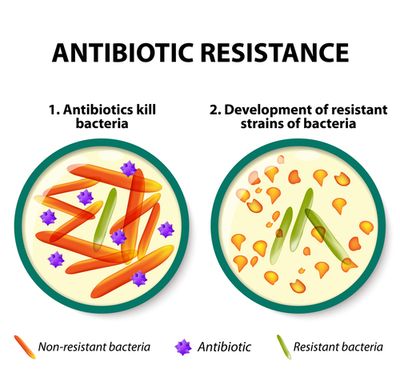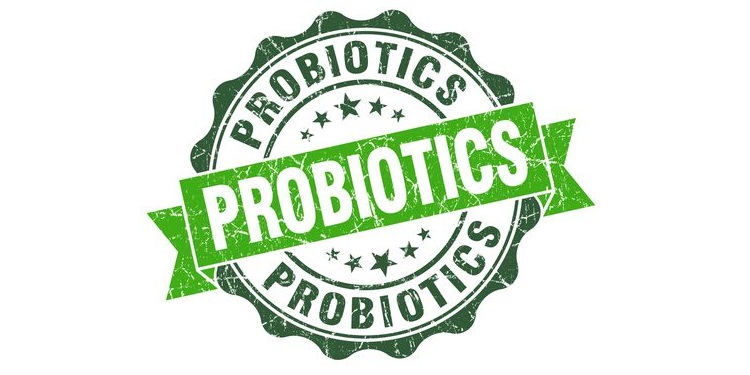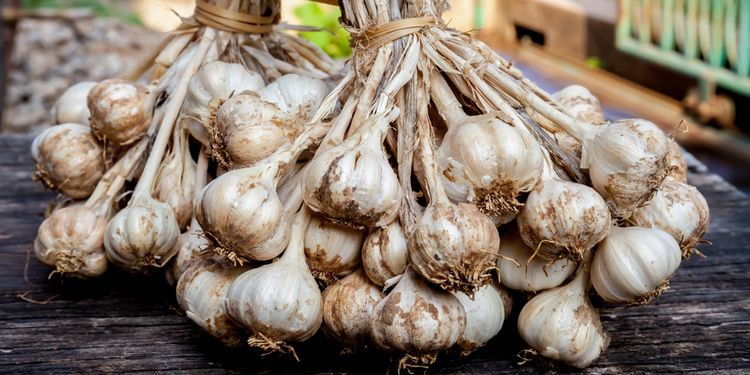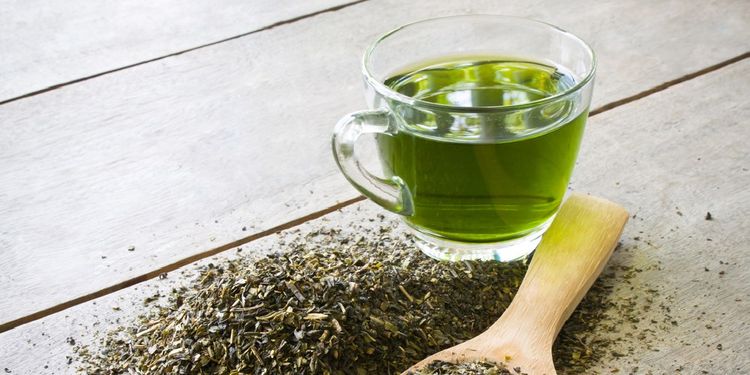8 Safe Herbal Antibiotic Alternatives That Really Work
Contrary to some articles you might come across out there, antibiotics aren’t entirely evil. As Dr. Aviva Romm points out, they play a central, crucial role in fighting off serious bacterial infections. Antibiotics are to be thanked for a decrease in infant and child mortality due to infectious diseases and have also contributed to our longer lifespans. But that doesn’t mean we should be popping them for every little ailment just because they’re so readily available.

Antibiotic Overuse
Dr. Romm points out that while she’s grateful to have the ability to prescribe antibiotics for serious conditions such as Lyme disease, kidney disease and other life-threatening infections, they’re being overused in our modern society.
Around 30% of women receive antibiotics during pregnancy or labor and 69% percent of children in the United States have been given a course of antibiotics for common childhood infections by the age of 2.
By age 18, most children in the U.S will have been given between 10 and 20 rounds of antibiotics. Add to that another 10-13 courses in their 20s and you get a shocking 300 days spent on antibiotics by the age of 30–a trend that is mimicked in those over age 60.
The CDC reports that at least 50% of these antibiotics for children are unnecessary, often prescribed for viral infections which cannot even be healed with antibiotics. Dr. Romm feels that we’ve become so comfortable with antibiotics being prescribed by our doctors that we trust that they are safe simply because they’re so prevalent. This simply isn’t the case.
We’re also getting antibiotics from animal products. At least 80 million pounds of antibiotics go into our cattle, poultry and fish each year in order to keep them “healthy,” but also to increase the weight of the animal.
Even organic fruit can contain antibiotic contaminants that aren’t required to be disclosed to consumers. So unless you personally know your farmer and the source of the food that comes to your table, you’re likely to be consuming at least some antibiotics through your meals.
Lessons We’ve Learned From Antibiotic Overuse
Lesson 1: Adverse Reactions are More Common Than You’d Think
Upwards of 140,000 annual hospital visits in the U.S. stem from negative reactions to antibiotic prescriptions. Reactions are most common in children under 18.

Lesson 2: Antibiotic Resistance Has Silently Become a Global Health Crisis
As a result of the inappropriate overuse of antibiotics as prescriptions as well as in the meat industry, antibiotic resistance is turning into a major health problem worldwide.
This doesn’t simply mean that an individual becomes resistant to a particular antibiotic. It actually means that the bacteria have become smarter than the drug, making the antibiotic ineffective in treating someone who happens to have an infection of a “smart,” resistant strain of bacteria. These bacteria are a frightening threat to the health of populations around the globe.
Lesson 3: Antibiotics Take No Prisoners
Antibiotics kill off good bacteria along with the bad, and the populations of that healthy gut flora might never fully recover. Because of this, as a population, we are at an increased risk for autoimmune disease, obesity, mood disorders and much more.
Why Are Antibiotics Prescribed So Often?
Many parents are comfortable with antibiotics and expect a prescription for their sick child. Because of this, doctors are worried about legal issues if an infection left untreated by antibiotics turns into something more dire.
Furthermore, these same doctors often feel rushed, and it’s far easier to prescribe, rather than explain why antibiotics can be dangerous. Finally, doctors rarely possess the knowledge to offer effective alternatives to antibiotics.
Supplements To Keep You Healthy and Away From Antibiotics
This is where you, as an individual, can take your health and the health of your family into your own hands. There are several healthy alternatives to antibiotics, but Dr. Romm is clear in outlining that the real key is to provide yourself with a foundation of health through nutrition and lifestyle so that the risk of getting an infection is lowered.
A diet rich in quality, nutrient dense food is of the utmost importance along with key supplements including protein, zinc and probiotics.

Protein is vital to immune health and cell building, which will help to fight infections. High sources of protein include organic meats, poultry and fish, as well as eggs, beans and nuts.
Zinc also plays a huge role in immune health, specifically in the gut. Good sources of zinc include oysters and pumpkin seeds.
Iron is also a big piece of the immunity health puzzle, so make certain to get enough in your diet, especially if you’re vegetarian or vegan.

Probiotics can work to not only boost immunity, but also to help you heal from past use of antibiotics by reinoculating your gut with the good guys. Look for a probiotic supplement that has the strains Lactobacillus, Saccharomyces and Bifidobacterium.
Finally, never underestimate the effectiveness of a daily saline rinse, such as a Neti pot. It’s been proven that it can prevent infections during flu season.
8 Herbal Antibiotic Alternatives
Dr. Romm offers eight antibiotic alternatives to support the immune system in preventing and fighting infection. Many of these herbal remedies are helpful for both viral and bacterial infections, which is especially helpful when you’re uncertain of the type of infection you’re dealing with.
Be sure to check with a doctor before using herbs if you have an immune disorder or are pregnant, if you’re seeking to treat a child of six months or under, or if you’ve got nagging symptoms such as a fever, cough, difficulty breathing, spitting up blood, abdominal pain or throwing up.
Dr. Romm advises recommended dosages for each of the following as per product instructions, unless otherwise specified.
1. Andrographis:
This is an herb for the prevention and treatment of colds, bronchitis, viral sore throat, and sinus infections. Combining this herb with Siberian ginseng has been proven effective in treating colds, especially when employed within the first 2-3 days of symptomatic onset. Andrographis is safe for children and can be used while breastfeeding, but isn’t recommended during pregnancy.
2. Echinacea:
Echinacea is more preventive than it is curative. This means that you can take it throughout cold and flu season, as opposed to using it as a spot treatment for a particular infection.

3. Elderberry:
Elderberry is effective in treating the flu in adults and children, especially when started in the first two days of symptomatic presentation. It’s safe while breastfeeding and during pregnancy, and can be taken in pill form.
Dr. Romm however has her own super simple elderberry-echinacea syrup recipe:
Combine equal parts elderberry syrup and echinacea glycerine.
– Babies 6 months – 1 year: 1/2 tsp 3x daily
– Children up to 7 years old: 1 tsp 3x daily
– Kids over 7 years old: 1-2 tsp 3x daily
– Adults: 1-2 TBS 3x daily
For the syrup, she recommends 1 TBS three times daily.

4. Garlic:
Garlic has been found to increase immunity and fight both viral and bacterial infections. Include garlic in your diet as much as you’re willing to tolerate it. If you like it, even better! You can also press a clove of garlic and mix it with a teaspoon of honey to eat it right off the spoon.
The best solution however, might be Dr. Romm’s Garlic Lemonade, which is safe while breastfeeding and during pregnancy:
– Mince two cloves of garlic and drop them in a large glass jar (a mason jar would work well).
– Fill the jar with a quart of boiling water and cover for 30 minutes.
– Once the time is up, strain out the garlic and add the juice of one lemon to the garlicky water.
– Add honey to taste. For babies 6 months to a year old, replace honey with maple syrup. Not for babies under six months.

5. Ginger:
Ginger helps wage battle against viral infections, aiding with congestion, fevers, aches and pains, as well as digestive issues. Dr. Romm has a great ginger tea recipe that is safe while breastfeeding, and that can be consumed in quantities up to 2 cups daily during pregnancy:
– Steep 1 TBS of freshly grated ginger in a cup of boiling water for 10 minutes. Cover while steeping.
– After 10 minutes, add lemon and honey to taste.
– Enjoy up to 4 cups daily (again, only 2 cups daily during pregnancy).

6. Green Tea:
1-2 cups daily of green tea has been prove to prevent sinus infections, which is an infection that is commonly treated with antibiotics.
7. Umckaloabo (“Umcka” or Pelargonium):
This herb has been proven to reduce the length of colds accompanied by cough, bronchitis and sinus infections. For a tough sinus infection, you might need to take it daily for up to three weeks to get the job done.
8. Maitake Mushrooms:
These bolster the immune system and have been proven to prevent respiratory infections, such as colds accompanied by ear and sinus infections, as well as coughs. These can be taken daily in either pill or extract form.
Herbs have helped to keep Dr. Romm’s family well for over 30 years. Hopefully this list can help you to avoid conventional antibiotic use for the next 30 years, and well beyond.
